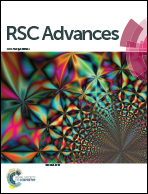Ammonium retention by oxidized biochars produced at different pyrolysis temperatures and residence times
Abstract
In order to investigate the effects of pyrolysis conditions and oxidation on the retention potential of ammonium by biochar in aqueous solution, biochars were produced from mixed maple wood at different pyrolysis temperatures (300, 400, 500, 600, 700 °C) and residence times (5, 60, 120, 400, 800 min) and adsorption and desorption was determined. Hydrogen peroxide was used to oxidize the biochars with pH values ranging from 7.6 to 2.7, with one set being adjusted to a pH of 7 afterwards. Without oxidation, varying either pyrolysis temperatures or residence times did not have a relevant effect on ammonium adsorption. When oxidized, however, ammonium adsorption was up to 3.6 and 1.6 times greater at lower higher pyrolysis temperatures and shorter longer residence times, respectively. Neutralizing the oxygen-containing surface functional groups on oxidized biochar to pH 7 further increased ammonium adsorption three to four-fold for biochars originally at a temperature of 500 °C and residence time of 5 min, but did not change adsorption of biochars pyrolyzed at 600 °C and above and residence times at 400 min and above. Adjusting the pH of unoxidized biochars had no effect on ammonium adsorption. Both pyrolysis temperature and residence time significantly influence the way oxidation changes the charge properties with respect to ammonium adsorption by woody biochar.


 Please wait while we load your content...
Please wait while we load your content...